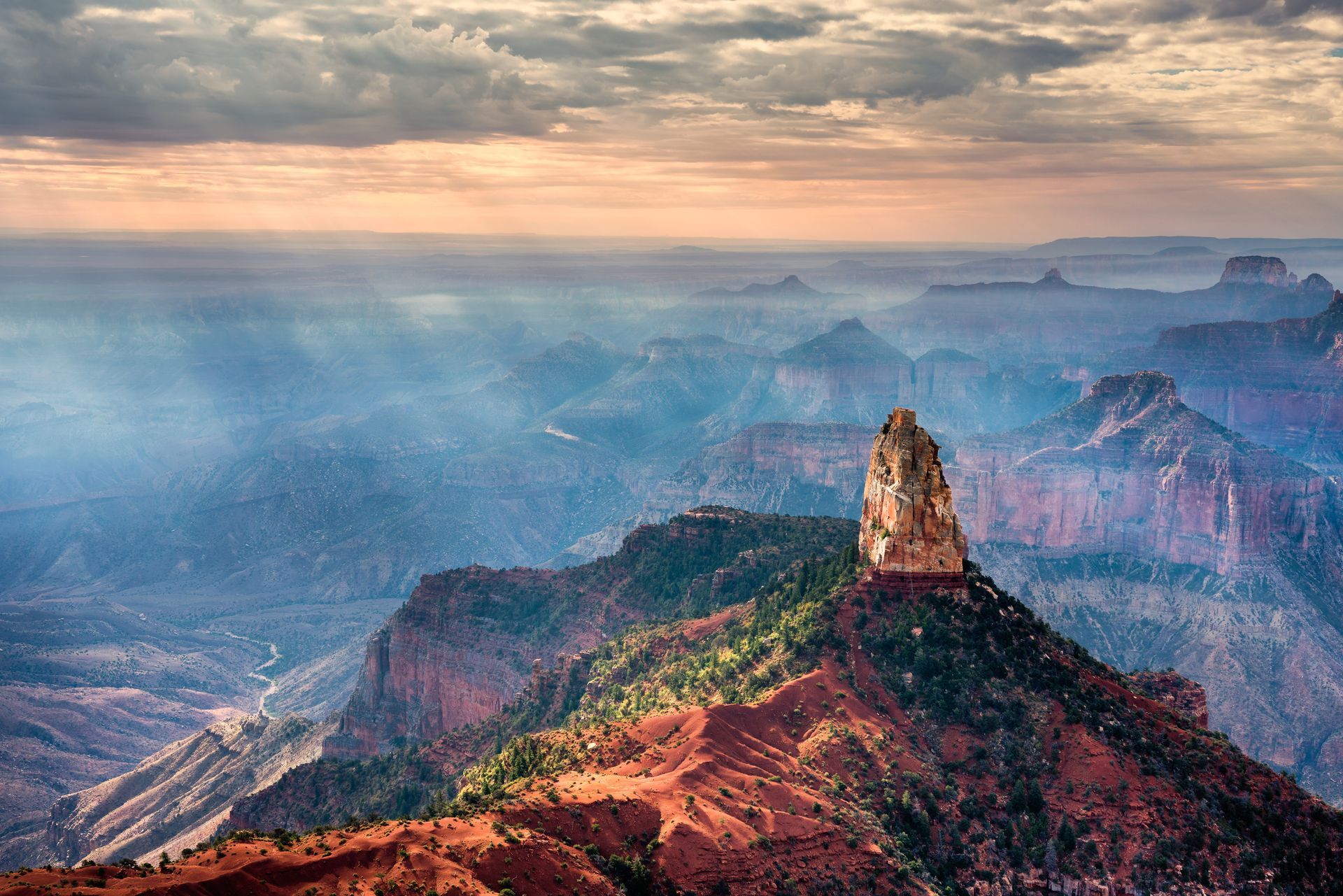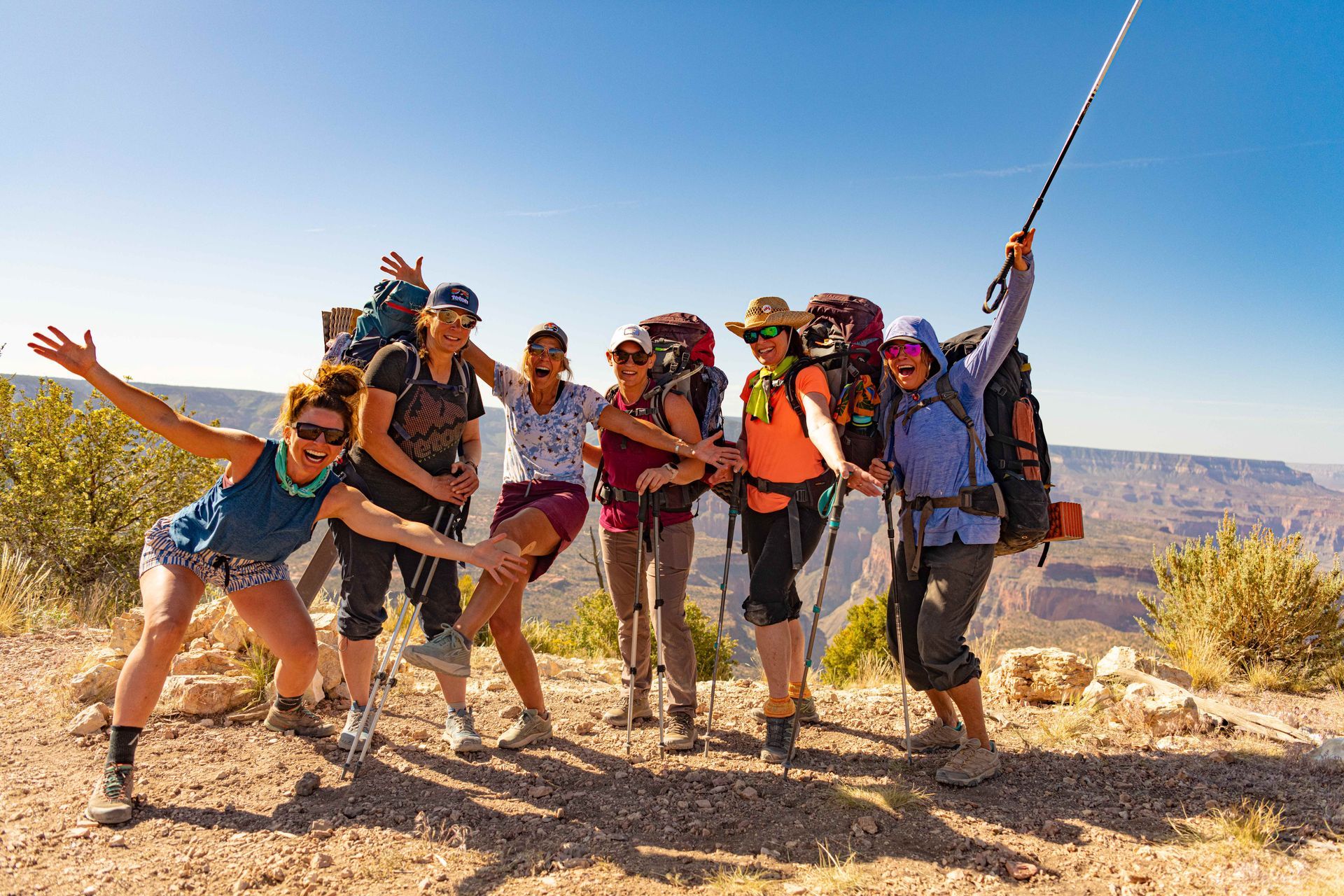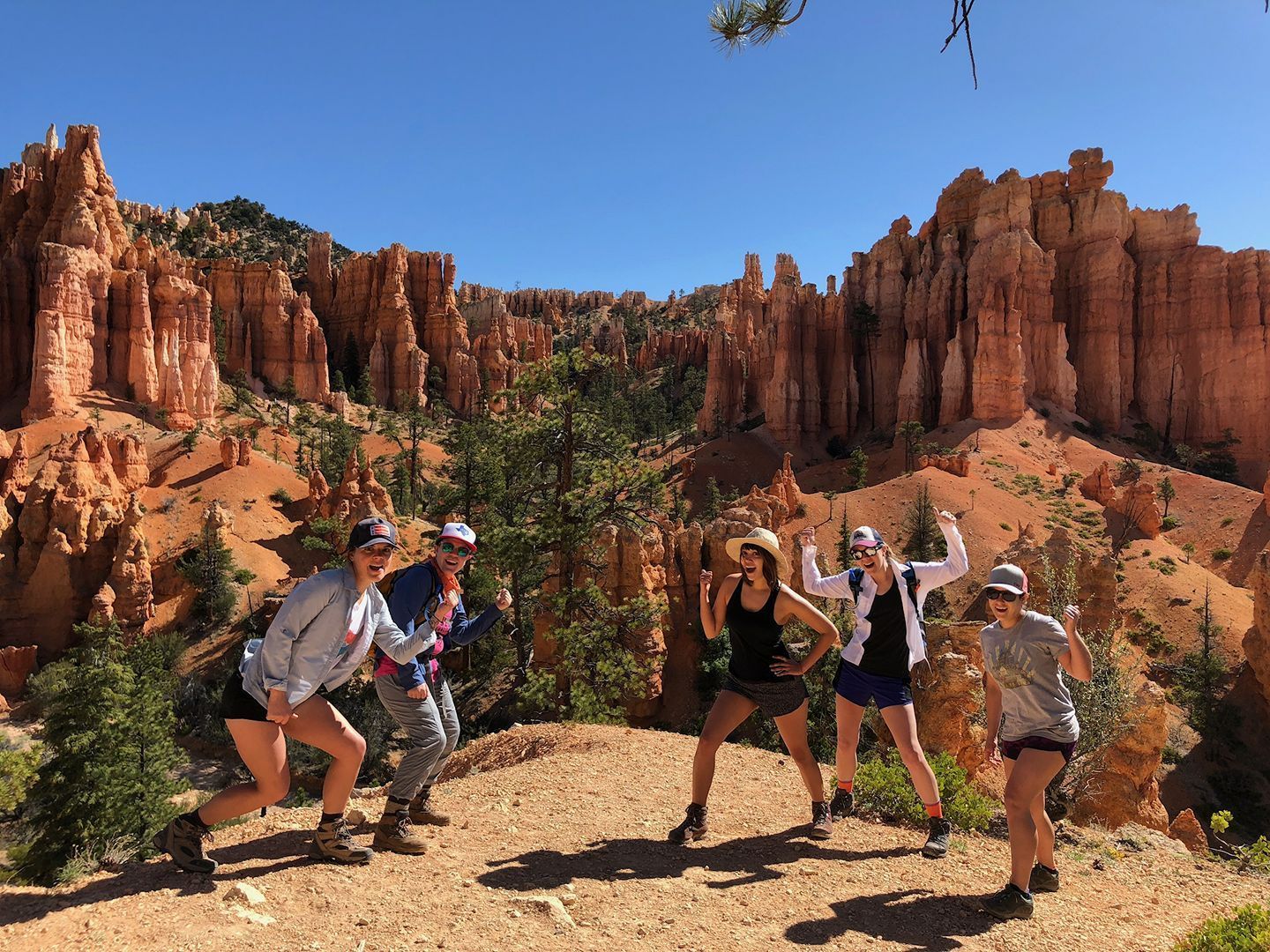Yosemite Packing List
Once you have picked your Yosemite Backpacking Trip, it's time to start thinking about what to bring to Yosemite and from layers to essential hiking items and gear for Yosemite. Your trip with Four Season Guides is sure to be one you never forget, but a big part of having lots of fun is being well prepared!
Even though we provide the camping equipment essentials, there are a few things we want to be sure you don’t forget. This Yosemite packing list is for the summer months (June through early September). Trips outside of this timeframe might require more warm layers—especially if you're planning to trek through high-elevation routes like Red Peak Pass Loop or Clouds Rest/Half Dome. Whether you're backpacking in Yosemite, snowshoeing in Yosemite, or taking part in our guided Hikes, we’ve got you covered.
Backpacking Trip Essentials
Personal clothing:
Footwear
- Hiking boots for Half Dome or well broken-in shoes – sturdy and appropriate for mountain climbing in Yosemite
- Sandals or flip-flops – For camp comfort after a long day of hiking
- Hiking socks (2 or 3 pairs) – Wool or synthetic hiking trail essentials; no cotton
Base Layers
- Midweight long-sleeve baselayer – Wool or synthetic for winter hiking Yosemite National Park
- Long underwear bottoms – 1 pair, midweight synthetic or wool
Insulation
- Down or synthetic insulated jacket – Great for early morning and evening warmth in Yosemite national park in November
- Fleece pants – Optional for colder trips (e.g., September or high elevations)
Outerwear
- Rain shell – Waterproof, lightweight, breathable
- Waterproof pants/trousers – A must for rain and snowshoeing in Yosemite National Park
Shirts & Tops
- Tee shirts (2) – Cotton for warm weather; synthetic for shoulder seasons
- Hooded long-sleeve sun shirt – Can substitute for one tee
- Warm hat – For cold weather and evenings
Pants & Shorts
- Lightweight long pants/trousers – For sun protection and warmth
- Shorts (1 or 2 pairs) – Synthetic and quick-drying preferred
Accessories
- Hat – For sun protection
- Sunglasses - Don’t forget these essential hiking supplies
- Gloves/mittens – Wool or fleece (1 pair)
The temperature in Yosemite Park can vary dramatically. The daytime temperatures can be warm, reaching into the 70s or even the 80’s, with the night temperatures dropping near freezing. If you're hiking routes like Tuolumne Meadows & Waterfalls, it’s best to be prepared for both warm days and cool nights. Weather in Yosemite CA also fluctuates—be sure to check the current weather at Yosemite National Park before packing. Dressing in layers is the key to warmth and comfort.
Keep in mind that the time of year and specific weather forecast will ultimately determine what to wear in Yosemite. Don’t assume that you will not need some of the items and risk not having them when necessary. If you are concerned that you will never use certain clothing/gear again, consider leaving the tags on your newly purchased items and you can always return them unused if not needed. The key to being comfortable and happy in the backcountry is to have everything you need.
Personal Gear & Toiletries:
Hydration
- Water bottles / Hydration bladder (3 liters total capacity) – A combination of a 3L bladder and a water bottle is ideal. Vital for all-day Hikes.
Lighting
- Headlamp – Bring one with fresh batteries
Sleep & Comfort
- Camp pillow (optional) – Lightweight or inflatable, or use clothes in a stuff sack
- Pack towel – Small, lightweight face cloth
Sun & Skin Protection
- Sunscreen – SPF 30 or higher
- Lip balm – Preferably with SPF
Toiletries
- Toothbrush & toothpaste – Travel size
- Small packet of tissues
- Feminine hygiene products
Health & First Aid
- Personal medication – Includes ibuprofen, antihistamine, antacid, etc.
- EpiPen – If you have severe allergies
- Insect repellent & mosquito head net – Critical in Yosemite adventure supplies
Gear We Provide:
- Backpack : a minimum 60-liter capacity backpack, fully adjustable to fit all heights
- Tent: a 1- or 2-person top-of-the-line backpacking tent
- Sleeping bag: appropriately rated for the forecast low temperatures
- Sleeping pad: Thermarest-brand inflatable pad plus a closed-cell foam pad
- Trekking poles
- All necessary cooking/eating gear: bowl, cup, utensil (your guide will prepare all meals)
- Bear canister
- Group first-aid: your guide is a trained and certified Wilderness First Responder
- Water purification
You are welcome to bring any of your own gear, as long as we are notified in advance and approve the gear. Backpacks must be a minimum of 60-liter capacity. Sleeping bags must be appropriately rated for the forecast low temperatures. Tents should ideally be free-standing, unless you have considerable experience pitching your non-free-standing tent or tarp.
Planning Tips for Specific Months
What to Pack for Yosemite in May, June, and July
From Yosemite's July weather to June, summer brings heat, bugs, and crowds. Don’t forget:
- Bug spray, SPF, and hiking stuff to bring
- What to pack for Yosemite in June includes plenty of water and lightweight day hike necessities
What to do in Yosemite in June? Check out our guided hikes and waterfall trails!
Anticipate temperatures in Yosemite in July over 85°F. You’ll need sun protection, breathable gear, and extra water
What to Pack for Yosemite in October & November
- Temperature in Yosemite Valley cools quickly—think Yosemite temperature in November and weather in October in Yosemite
- Include fleece pants, insulated jackets, and waterproof items for rain or snowshoeing
Not sure what to do in Yosemite in November? Try Hikes through peaceful trails with stunning fall colours.
Top Things to Bring on a Day Hike
Whether you're exploring the valley or taking on Half Dome, here’s a short day hike supplies checklist:
- Things to pack for a day hike: hydration, snacks, SPF, a headlamp
- Day hike what to bring: map, first-aid kit, extra layers
- Things to take on a hiking trip? Our full gear list helps ensure you're trail-ready
Ready for an adventure?
Whether you're headed to Yosemite National Park backcountry, planning a Yosemite National Park vacation package, or just need top things to do in Yosemite National Park, we’re here to make your experience exceptional.
Don’t forget to book your guided hikes with FS Guides—your trusted expert for thrilling and safe Yosemite adventures. From Half Dome climbs to fall treks through changing leaves, FS Guides helps you see the best of Yosemite with none of the stress.
From the trail to your heart—see what adventurers are saying about FS Guides. Our
Google Business Profile Reviews are filled with stories of connection, challenge, and unforgettable moments.
Four Season Guides, 506 N Grant St suite o, Flagstaff, AZ 86004, United States
+19285251552
35.19653980, -111.62000560





